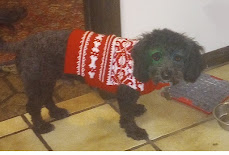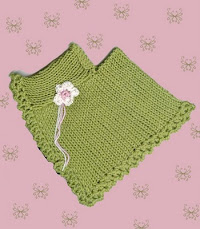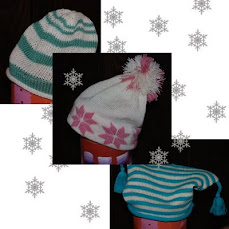I'm having work done on my house---4 guys here. I feel like I'm trapped doing nothing really until they leave. So I decided to look over my patterns on my computer and saw one---- "Oh yeah. I liked how I did this one." and decided to post the directions. Whew! That was 10 years ago. Hope I explained it well enough because it's kind of an unusual way to knit.
By Mar Heck ©2011
A unique looking cowl that can be knit on any gauge knitting machine. No ribber is required. The knitting is done in the round so that when you have reached the desired height, you bind off and there is no finishing required. The technique can be adapted to scarves too.
Machine:
Any, no ribber required.
Yarn:
Any that is interesting…Variegated or hand dyed yarn with long dye
repeats works well. One color is
interesting too though. The purl side
and knit side have entirely different appearance. You decide which you like better. Amount
needed will vary according to size you make.
Yarn used in the size small sample cowl:
Serenity Garden Yarn from the Deborah Norville Collection. One skein, 2.29 ounces/65 grams. 185 yards/ 169 meters. Microfiber. A larger cowl will require more yarn.
Gauge:
Not important, whatever works well on your machine with your chosen yarn. You’ll need to decide how wide you want each
strip to be. On the standard gauge try 12
stitches to start. IF you don’t like,
rip out and change. The fewer the number of needles you cast on, the longer it
will take to reach the desired size. BUT
it depends on the “look” you want. With
sock yarn and the standard gauge machine, I started with 12 stitches, T 6, and
increased (loosened) the tension one dot each revolution to shape it a little.
(Conversely, you could start loose and tighten as you go. Doesn’t matter.) Or, don't bother to change the tension from start to finish.
Skill level:
Beginner with some experience
Finished size:
For the cowl, suggested sizes are Small= 20” around and 9” tall; medium
=22” around and 10” tall; large =24” around and 12” tall. However, you can make it any size you desire.
TIPS FOR
THIS TECHNIQUE ~ READ FIRST
· * This technique involves knitting on the bias
by decreasing on the left and increasing on the right. When the desired width is achieved (the width
you want to go around the neck), you start to attach loops beginning at
the start of the strip and continuing around, making a tube. When deciding on the width to go around the
neck, add 2+” because you lose an inch or so on each end as the first and last
triangles are formed.
· *You will need to make sure you hang
each loop only once and don’t skip any loops or you’ll change the circumference
of the tube and interrupt the lacey hole pattern!
· *With stockinette stitch as the public
side, the increases make a nice little decorative hole that spirals around the
thing and the doubled stitch makes a nice chain edge, also decorative. With the purl side as the public side, the
fabric has a woven look to it. (See photos at the end of the pattern.)
· ( Move claw weights up frequently, especially on
the right side since it is hanging at a slightly different angle. Or, if your
strip is narrow enough, hang on with one hand while running the carriage with
the other.
· * You’ll be knitting across the needle
bed, starting at the left side, and will most likely need to remove the
knitting on waste yarn when you get to the right side. Hang the stitches on the left side again and
remove waste yarn. Or, use a garter bar.
· * I like to pull the needles all the
way out when I increase and decrease so that if interrupted I can see at a
glance where I am in the pattern when I return.
· *Don’t forget to loosen (or tighten)
the tension as you complete a revolution if you have decided to
construct your cowl this way. The
beginning tab indicates where you should do this. (If knitting a scarf, keep
tension the same throughout.)
· * If your ribber bed is still attached,
it’s likely you’ll be resting your left hand on it. It’s a good idea to put a ribber cover on or
hang a protective piece of fabric or your hand will get really sore! It’s actually easier to see what you’re doing
if you remove your ribber.
DIRECTIONS
1.
Knit the first round on the bias, measuring to obtain the width you want
to go around your neck or two times the width of your scarf + an inch or
two for both (because you lose width in the beginning and ending triangles). To knit this strip on the bias, start out by ewrapping your
chosen number of N on the left side of the needle bed. You may crochet cast on if you prefer. Knit 2 rows. (It’s hard to knit at first so
bring all N out before knitting to make sure the stitches knit off, hang on
with your hand for weight or attach claw weights.)
* Decrease
one stitch on the left by putting the second to the end stitch on the left end needle
and then move the doubled stitch to the right one needle. Put the emptied needle out of work. Increase
one stitch on the right by pulling a needle all the way out. Knit two rows.* Repeat from * to * for desired length. You
will continue with the same number of stitches throughout. If you find suddenly that you have less or
more stitches than you started with, you either forgot to decrease or
increase. You should rip back to where
there are the correct number of stitches.
L
This is one
time you can measure your strip while it’s on the machine. You knit this single strip just once.
2.
Attach and knit as you go to make a spiral.
Think of how the cardboard on many toilet paper rolls are constructed. You’ll
be knitting around it making a spiral. As
the knitting is facing you, you’ll be knitting the inside of the tube. (The toilet roll is given to just help you
visualize this.)
Bring the beginning end of the strip toward
the needle bed with the knit side facing you, curling it around so that you can
identify the first loop you made in #1. From
front to back, you will be putting a loop from the beginning of the strip onto
the left needle. You should be able to
see that knit stitches of the strip will be on top of or next to knit stitches
and purl on top of or next to purl. Make
sure you haven’t twisted the strip.
Check twice!
This is the sequence: ^Decrease one stitch on
the left by putting the second to the end stitch on the left end needle and
then move the doubled stitch to the right one needle. Hang a loop from the strip on the first
needle on the left. (3 stitches on that
needle now.) Increase
one stitch on the right by pulling a needle all the way out. Knit two rows.^ Repeat from ^ to ^ continuing to hang the
next loop as you move around the tube.
The simple increases on the right side form the loops that you will
eventually hang. There is no beginning
or end to the row, you just continue on around your tube.
Picking
up stitches: On the picture above, the red represents a
stitch previously picked up. The next
stitch (loop) to be picked up and hung
is green. It lies horizontally, whereas
the stitch that was picked up previously is vertical and stretched out. You’ll be tempted to pick up the red
one. Don’t do it! J
Now decide
how long you want the cowl to be from chest to chin or how long you want the
scarf to be. Keep going until you like
the size or run out of yarn.
Finish: Bind off around the gate pegs, weave in
yarn ends. Fold over the beginning tab
or tack down.
This technique done as a scarf:
Knit side as right side pictured on the left, doubled stitches make a decorative ridge. Compare
to purl side as right side pictured on the right. Stitches
look woven. The lace holes seem to show up better on the purl side. You actually do not have to decide until the cowl is done.
Once again, hope I explained well enough. It's not hard to knit, just hard to explain.











































































2 comments:
I am totally in love with this pattern! Thank you!
I'm glad you like it. Would love to see a picture if you do make it.
Post a Comment